Introduction
Wondering if a 30-minute cardio workout can truly deliver results? The answer is yes—if done right! Whether you’re aiming for weight loss, improved endurance, or better heart health, a well-structured 30-minute session can be highly effective. Studies show that moderate to high-intensity cardio, like running, cycling, or HIIT, burns calories, boosts metabolism, and enhances cardiovascular fitness—even in shorter durations.
The key to success lies in intensity and consistency. A brisk 30-minute cardio workout that keeps your heart rate elevated can torch calories, improve stamina, and promote fat loss. High-Intensity Interval Training (HIIT), for example, maximizes efficiency by alternating bursts of intense effort with short recovery periods, making it a powerful option for time-crunched individuals.
But does it work for everyone? Results depend on factors like fitness level, diet, and workout variety. Pairing your 30-minute cardio workout with strength training and a balanced diet can amplify results. Whether you’re a beginner or a fitness enthusiast, this manageable time frame makes it easier to stay consistent—a crucial factor for long-term success.
Ready to make the most of your half-hour sweat session? Let’s explore how to optimize your 30-minute cardio workout for maximum results!
What Happens During a 30-Minute Cardio Workout?
A 30-minute cardio workout may seem short, but your body goes through significant changes in that time. Whether you’re running, cycling, doing HIIT, or brisk walking, your heart, muscles, and metabolism shift into high gear. Here’s a breakdown of what happens inside your body during those 30 minutes—and how you can maximize results.
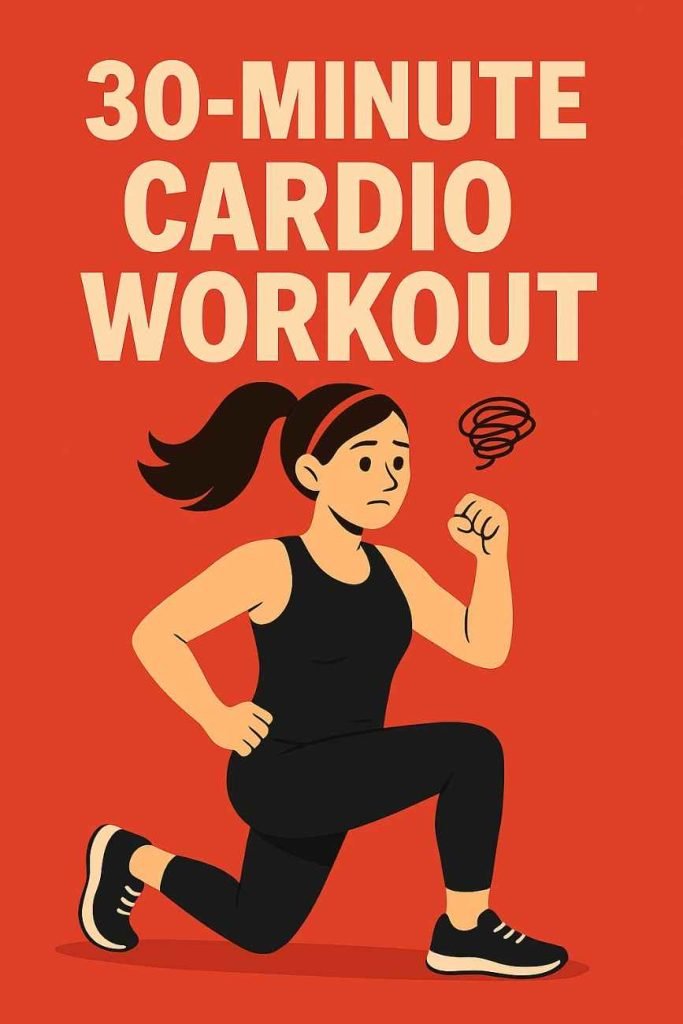
Breakdown of What Your Body Does in 30 Minutes
- First 5-10 minutes: Your heart rate rises, and your body taps into glycogen (stored carbs) for quick energy.
- 10-20 minutes: Fat burning increases as your aerobic system kicks in. Endorphins (“feel-good” hormones) start flowing, boosting mood.
- 20-30 minutes: With sustained effort, your metabolism stays elevated, leading to an “afterburn effect” (EPOC), where you continue burning calories post-workout.
Common Forms of 30-Minute Cardio Workouts
- Running (outdoor/treadmill) – Burns major calories & improves endurance.
- Cycling (stationary/outdoor) – Low-impact but effective for fat loss.
- HIIT (High-Intensity Interval Training) – Short bursts of max effort for maximum calorie burn.
- Brisk Walking – Great for beginners & active recovery.
Calories Burned in 30 Minutes (Approximate)
| Activity | 125 lb (57 kg) | 155 lb (70 kg) | 185 lb (84 kg) |
|---|---|---|---|
| Brisk Walking | 120-150 kcal | 150-185 kcal | 180-220 kcal |
| Cycling | 210-240 kcal | 260-300 kcal | 310-360 kcal |
| Running (6 mph) | 240-300 kcal | 300-370 kcal | 360-440 kcal |
| HIIT | 250-400 kcal | 300-500 kcal | 350-600 kcal |
A 30-minute cardio workout can absolutely deliver results—if you push intensity and stay consistent. Ready to make the most of your next session? Let’s dive deeper into optimizing your routine!
Is 30 Minutes of Cardio Enough for Fat Loss?
Yes, a 30-minute cardio workout can be enough for fat loss—if you focus on intensity and consistency. While longer sessions burn more calories per workout, shorter, high-effort cardio can be just as effective (or even more efficient) when done right. Here’s how:
Short vs. Long-Duration Cardio for Fat Loss
- 30-minute cardio (high intensity): Burns calories quickly, boosts metabolism for hours afterward (EPOC effect), and fits easily into busy schedules.
- Longer, steady-state cardio (60+ mins): Burns more calories during the workout but may not provide the same metabolic boost afterward.
Key Takeaway: A 30-minute cardio workout (especially HIIT or vigorous running/cycling) can be more time-efficient for fat loss than longer, moderate sessions.
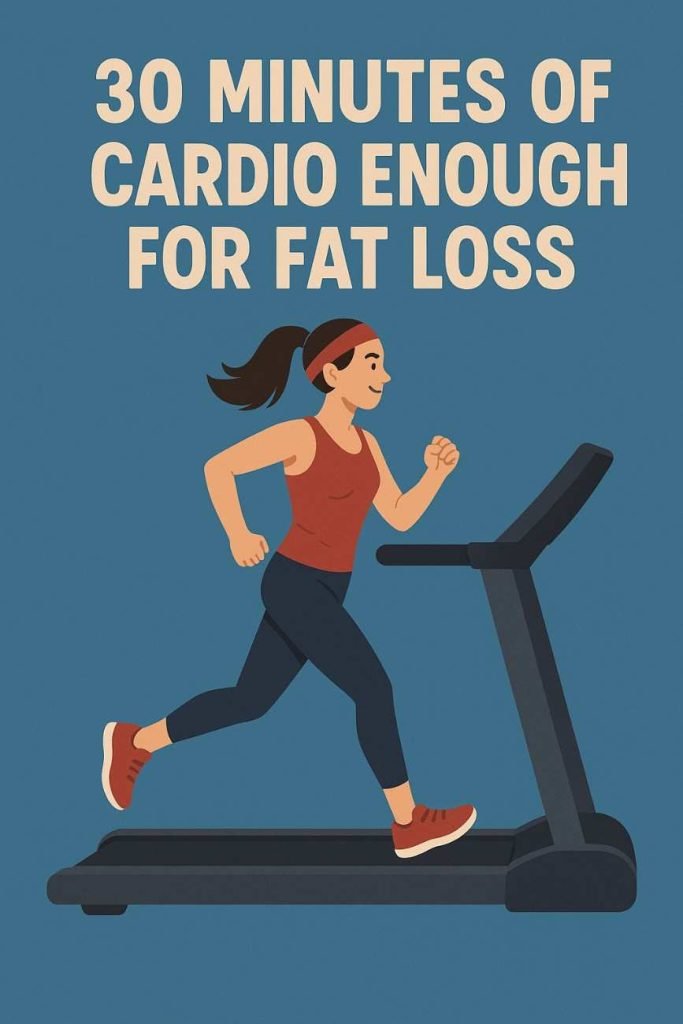
Intensity Matters More Than Duration
- High-intensity workouts (HIIT, sprints, fast cycling) torch calories fast and keep your body burning fat even after you finish.
- Moderate-intensity (brisk walking, jogging) still helps but requires more time to see similar results.
How a 30-Minute Cardio Workout Supports Fat Loss
Fat loss happens when you maintain a calorie deficit (burning more than you eat). A 30-minute cardio workout contributes by:
- Burning 200-500+ calories (depending on intensity and weight).
- Increasing post-workout calorie burn (especially with HIIT).
- Improving insulin sensitivity, helping your body use fat for fuel more efficiently.
Bottom Line: A 30-minute cardio workout is absolutely enough for fat loss—if you push hard and pair it with a smart diet. For best results, mix high-intensity sessions with strength training to preserve muscle while shedding fat.
Next Steps: Want to maximize fat burn in 30 minutes? Try alternating between sprints and recovery (HIIT) or adding incline/resistance to your cardio!
Can a 30-Minute Cardio Workout Tone Muscles & Boost Endurance?
A 30-minute cardio workout is great for burning fat and improving cardiovascular health—but can it actually tone your muscles and build endurance? The answer depends on your approach. Here’s what you need to know:
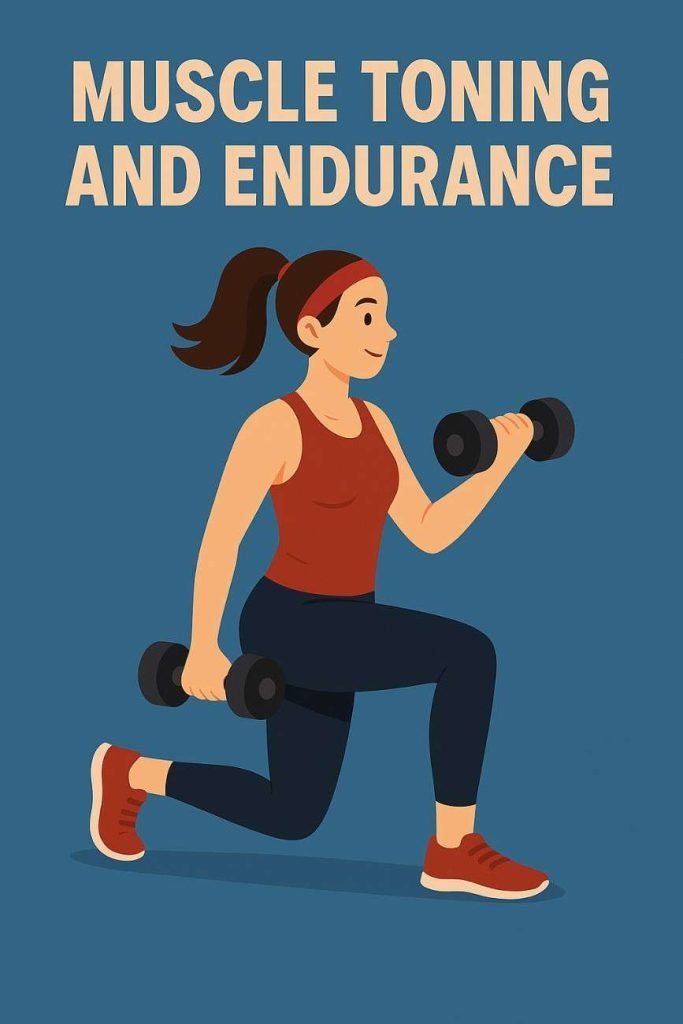
Does Cardio Alone Tone Your Body?
- Yes, but with limits: Cardio like running, cycling, or HIIT can help define muscles by reducing body fat, making underlying muscle more visible.
- However, it won’t build significant muscle mass—cardio primarily improves endurance rather than strength.
- Best for toning legs & core: Activities like sprinting, stair climbing, and rowing engage lower-body and core muscles more than upper body.
Cardio’s Impact on Heart, Lungs & Stamina
- Strengthens your heart: Regular cardio improves circulation and lowers resting heart rate.
- Boosts lung capacity: Increases oxygen efficiency, helping you perform better in workouts and daily life.
- Enhances endurance: Over time, a 30-minute cardio workout will feel easier as your stamina improves.
Cardio vs. Strength Training: A Quick Comparison
| Aspect | Cardio | Strength Training |
|---|---|---|
| Fat Loss | Burns calories fast | Burns calories over time (muscle = higher metabolism) |
| Muscle Toning | Defines but doesn’t bulk | Builds & sculpts muscle |
| Endurance | Major boost | Improves muscular endurance |
| Bone/Joint Health | Good (low-impact options) | Best (strengthens bones) |
The Verdict: A 30-minute cardio workout can help tone muscles by shedding fat and lightly engaging muscles, but for real definition, pair it with strength training 2-3x/week.
Pro Tip: For a balanced approach, try circuit training (mixing cardio + bodyweight exercises) or hill sprints to maximize toning and endurance in 30 minutes!
How Often Should You Do a 30-Minute Cardio Workout?
To maximize results—whether your goal is fat loss, endurance, or heart health—the frequency of your 30-minute cardio workouts matters just as much as intensity. Here’s what experts recommend, plus smart scheduling tips.
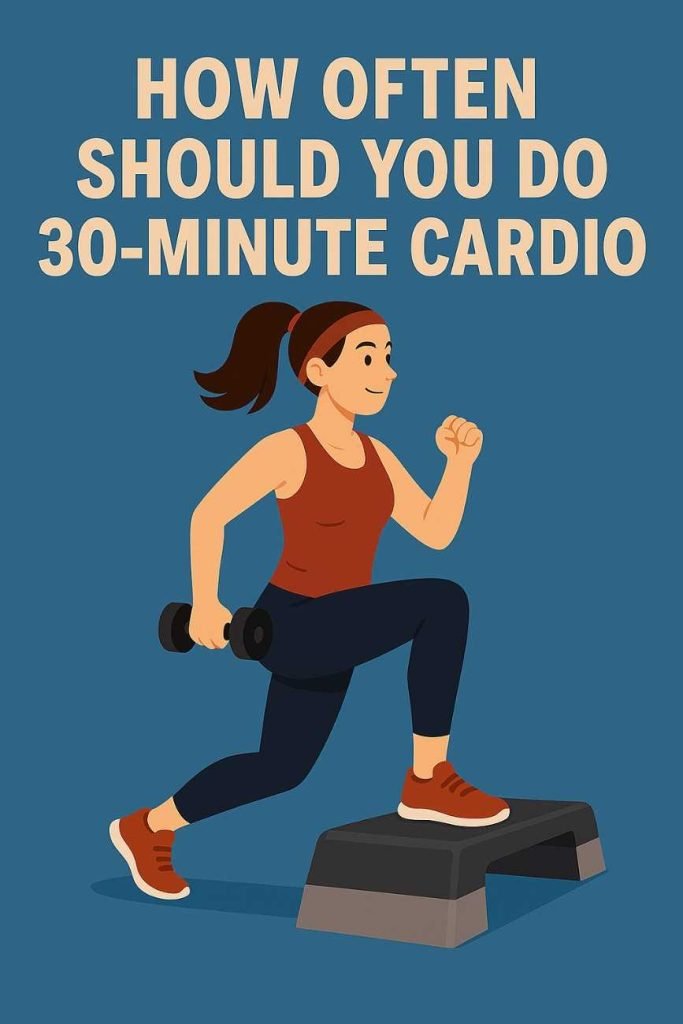
Official Guidelines (CDC & WHO Recommendations)
- For general health: At least 150 minutes of moderate-intensity cardio (like brisk walking) OR
- 75 minutes of vigorous-intensity cardio (like running/HIIT) per week.
- For weight loss or enhanced fitness: Up to 300+ minutes weekly (moderate) or 150+ minutes (vigorous).
Weekly Cardio Workout Plans
| Intensity | Weekly Sessions | Example Schedule |
|---|---|---|
| Moderate | 5 days (30 mins) | Mon-Fri: Brisk walking, cycling, or swimming |
| Vigorous | 3 days (30 mins) | Mon/Wed/Fri: Running, HIIT, or uphill sprints |
| Mixed | 3-5 days (varies) | Example: 2 days HIIT + 2 days steady-state cardio |
Key Tips for Best Results
✔ Listen to your body – Rest 1-2 days/week to prevent burnout.
✔ Mix intensities – Combine steady-state and HIIT for balanced fitness.
✔ Add strength training – 2x/week preserves muscle and boosts metabolism.
Bottom Line: For most people, 3-5 weekly 30-minute cardio workouts (depending on intensity) hit the sweet spot for health and fat loss. Adjust based on your goals and recovery!
Need a plan? Try this:
- Monday/Wednesday/Friday: HIIT (20-30 mins)
- Tuesday/Thursday: Steady-state (walking, cycling)
- Weekend: Active recovery (yoga, hiking)
Consistency beats perfection—start where you are and build up!
Real Results: What to Expect from 30 Days of 30-Minute Cardio Workouts
Committing to a 30-minute cardio workout every day (or most days) for a month can lead to noticeable changes—if you stay consistent. Here’s what science says you can realistically expect in 30 days, plus tips to maximize results.
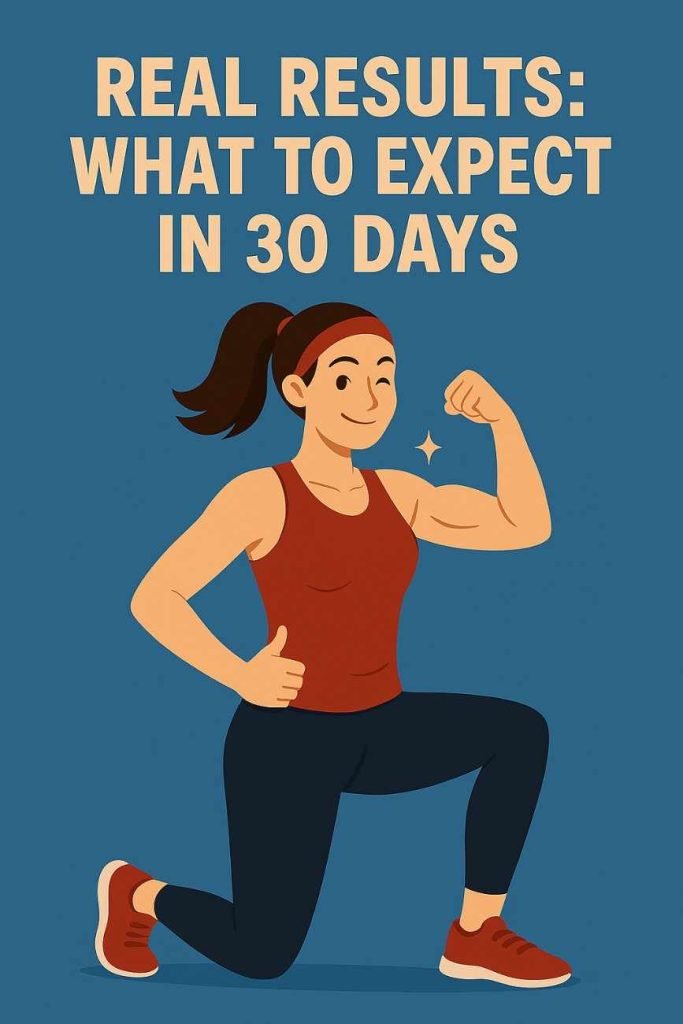
Physical & Mental Changes After 30 Days
1️⃣ Fat Loss (If in a Calorie Deficit)
- Expected: 2-5 lbs fat loss (varies based on diet, intensity, and starting weight).
- Why? A daily 30-minute cardio workout burns 200-500+ calories, helping create a deficit.
- Best for fat loss: HIIT, running, or cycling at high intensity.
2️⃣ Increased Energy & Mood
- Expected: Reduced fatigue, better sleep, and a mental boost (thanks to endorphins).
- Why? Cardio improves circulation, oxygen flow, and stress relief.
3️⃣ Endurance & Fitness Gains
- Expected: Easier breathing, faster recovery, and ability to push harder.
- Why? Your heart and lungs adapt, improving VO₂ max (oxygen efficiency).
5 Tips to Stay Consistent & Maximize Results
- Track Progress – Use a fitness app or journal to log workouts and improvements.
- Mix It Up – Alternate between HIIT, running, cycling, and dance cardio to avoid boredom.
- Pair with Strength Training – 2-3x/week to preserve muscle while losing fat.
- Prioritize Recovery – Stretch, hydrate, and take rest days to prevent burnout.
- Set Small Goals – Example: “This week, I’ll shave 10 sec off my mile.”
The Big Game-Changer: Combine with a Healthy Diet
- Cardio alone won’t guarantee fat loss—nutrition is 70% of the battle.
- Eat enough protein (to maintain muscle) and focus on whole foods.
- Avoid overcompensating with extra calories post-workout.
Final Verdict: Is 30 Days Worth It?
✅ Yes! In just a month, you’ll likely see:
- Better stamina (workouts feel easier).
- Healthier heart & lungs.
- Visible fat loss (if diet is on point).
- More energy & mental clarity.
Ready to start? Pick a cardio style you enjoy, stay consistent, and pair it with smart eating for the best 30-day transformation! 🚀
Pro Tip: Take “before” photos and measurements—sometimes changes are subtle but meaningful!
Who Might Need More Than a 30-Minute Cardio Workout?
While a 30-minute cardio workout is effective for general fitness and fat loss, some people may need longer or more intense sessions depending on their goals and fitness level. Here’s who might benefit from extending their cardio time—and why.

1. Weight Loss: When 30 Minutes Isn’t Enough
- For significant fat loss, especially if you have a slow metabolism or a large calorie deficit goal, longer sessions (45-60 mins) may help.
- Example: If you’re eating at a small deficit, adding extra cardio time can accelerate results.
- Best approach: Combine 30-minute HIIT (for efficiency) with longer steady-state sessions (like 45-60 min walks or cycling).
2. Endurance Athletes & Runners
- Training for a 5K, marathon, or triathlon? 30 minutes won’t cut it—longer runs (60+ mins) build stamina.
- Why? Aerobic endurance requires time under tension to improve efficiency.
- Solution: Follow the 80/20 rule (80% moderate cardio, 20% intense intervals).
3. Advanced Fitness Levels (Plateau Busters)
- If you’re already fit, your body adapts quickly—so 30 minutes may not be enough for continued progress.
- Solution:
- Increase duration (45-60 mins).
- Add inclines, resistance, or speed intervals.
- Try two-a-days (shorter AM + PM sessions).
4. Maintenance Mode (When 30 Minutes Is Perfect)
- If your goal is general health or active recovery, 30 minutes is ideal.
- Example: A daily 30-minute brisk walk is enough to maintain heart health without overtraining.
Final Takeaway
✅ Stick with 30 minutes if:
- You’re a beginner.
- Your goal is fat loss + strength training.
- You’re maintaining fitness.
⏱ Go longer if:
- You’re an endurance athlete.
- You’ve hit a plateau.
- You need a bigger calorie burn.
Smart Adjustment: Instead of just adding time, try increasing intensity first—it’s often more efficient!
What’s your goal? Tailor your cardio length accordingly!
Conclusion
The Bottom Line on 30-Minute Cardio Workouts
A well-structured 30-minute cardio session can be incredibly effective when you:
- Push the intensity (HIIT beats hours of slow cardio)
- Stay consistent (4-5x weekly works wonders)
- Pair it with strength training (for body composition)
- Support it with proper nutrition (abs are made in the kitchen)
Remember: Fitness is a journey, not a sprint. Whether you’re just starting out or looking to break through plateaus, these efficient 30-minute workouts can help you:
✓ Burn fat effectively
✓ Boost cardiovascular health
✓ Increase energy levels
✓ Build endurance
Yes, a 30-minute cardio workout can absolutely be enough to see real results—if done consistently and at the right intensity. Whether your goal is to burn fat, improve your heart health, or boost your overall fitness level, dedicating just 30 minutes a day to cardiovascular exercise can deliver significant benefits over time.
The key to making your 30-minute cardio workout effective lies in choosing the right type of cardio (like HIIT, running, or cycling), pushing your limits during the session, and pairing it with a balanced diet and active lifestyle. For many people, shorter, focused workouts are easier to stick with—making it more sustainable and therefore more successful in the long run.
If you’re short on time or just getting started, don’t underestimate the power of 30 minutes. When done right, it’s more than enough to boost your metabolism, improve endurance, and support long-term weight loss goals.
So lace up your sneakers, press play on that workout video, and remember—consistency beats duration. Your daily 30-minute cardio workout could be the game changer you’ve been waiting for.

